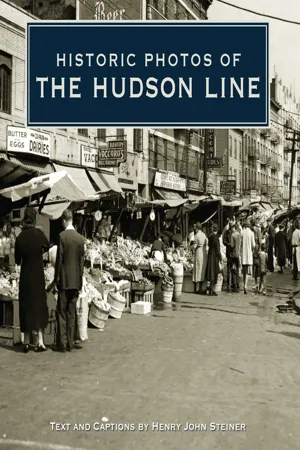
- English
- ePUB (mobile friendly)
- Available on iOS & Android
Historic Photos of the Hudson Line
About this book
For thousands of years prior to Henry Hudson's voyage, the Hudson River was a vital commercial and strategic route for the indigenous peoples who settled near its banks. The river's importance continued for centuries afterward, linking the great trading center of Manhattan with remote places upstate and beyond. In Revolutionary times, the successful struggle for the Hudson was key to American victory over the power of the British military.
The Hudson River railroad succeeded earlier modes of transportation in the Hudson Valley—the river sloop, the Albany Post Road, the steamboat, and the Erie Canal. The Hudson Line was both an early product of America's industrial age and a catalyst for the intense and complex developments of that age.
The advent of photography coincided with the inauguration of the Hudson River railroad, and American photographers were on-hand to witness and record the progress of commerce and community in the villages, towns, and cities along the Hudson River Line.
Frequently asked questions
- Essential is ideal for learners and professionals who enjoy exploring a wide range of subjects. Access the Essential Library with 800,000+ trusted titles and best-sellers across business, personal growth, and the humanities. Includes unlimited reading time and Standard Read Aloud voice.
- Complete: Perfect for advanced learners and researchers needing full, unrestricted access. Unlock 1.4M+ books across hundreds of subjects, including academic and specialized titles. The Complete Plan also includes advanced features like Premium Read Aloud and Research Assistant.
Please note we cannot support devices running on iOS 13 and Android 7 or earlier. Learn more about using the app.
Information
Table of contents
- Cover
- Title Page
- Copyright
- Contents
- Acknowledgments
- Preface
- Lost Tranquillity and a Changing Shoreline (1853–1899)
- Civic Pride and Civic Projects (1900–1920)
- Through Roaring Times and Ruined (1921–1940)
- The War Years and Postwar Era (1941–1960s)
- Notes on the Photographs